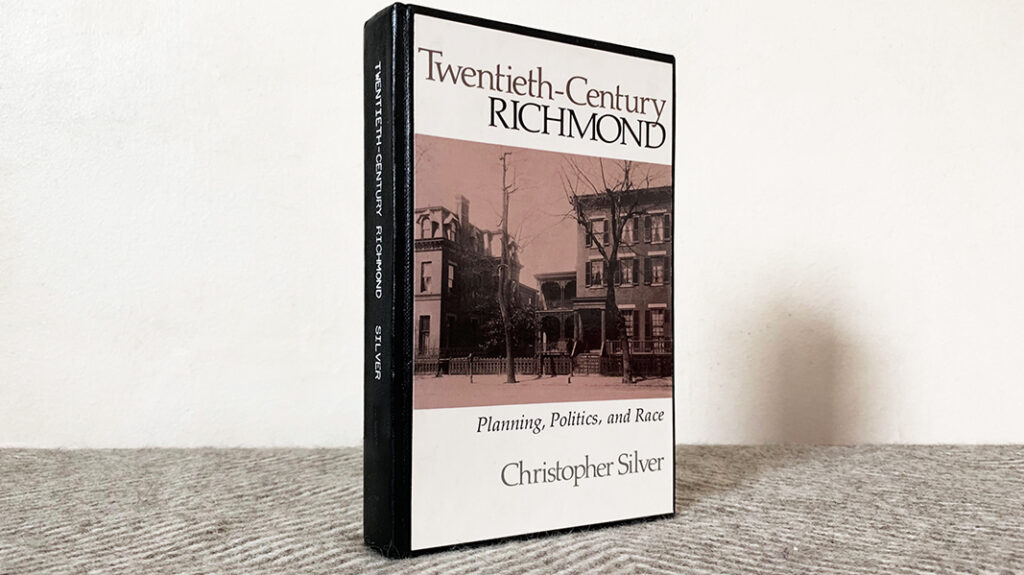Christopher Silver
1984
University of Tennessee Press
342 pages
Why does Richmond look the way it looks? Why are highways located where they are? Where did the line between Richmond and Henrico originate? Why have we settled this region in sprawling suburbs instead of compact districts? Why are the interests of minorities and the poor consistently sidelined in favor of middle and upper-class whites? These are some of the important questions addressed in Christopher Silver’s indispensable 1984 book, Twentieth Century Richmond: Planning, Politics, and Race
Silver, now a professor of urban and regional planning at the University of Florida, was an assistant professor at Virginia Commonwealth University at the time of writing. He also drew on work experience at the Community Development Division of the Richmond Redevelopment and Housing Authority in composing the book, which remains the best single resource on the history of planning in Richmond.
Silver’s book opens in the year 1900, and describes the nascent planning apparatus of the City of Richmond and the conditions which it brought it into being. Through the 1930s, the role of government in urban development was a topic of constant debate, with New South commercial boosters arguing for a more activist stance. It was not until after WWII that Richmond’s planning department acquired the power to truly transform, or perhaps destroy, the city. The city championed suburban growth in accordance with the Housing Act of 1949, the Federal Highway Act of 1956, and the other forces responsible for shaping the modern American landscape.
As the title suggests, Silver analyzes each chapter in the development of Richmond’s planning powers in the context of race. According to Silver, “local planning proponents maintained that zoning offered an effective means to ensure racial separation.” From the explicitly racist ordinances of the early 20th century to the thinly veiled segregationism of red-lining, Silver demonstrates how discrimination affected nearly every aspect of Richmond’s planning. The hostile treatment of the city’s Black population came to an apotheosis in the urban renewal era, during which highways and housing projects brought wholesale demolition to Black neighborhoods. Silver quotes Dr. Joseph T Hill, a prominent Black reformer and Jackson Ward resident, who presciently stated that, in the guise of urban renewal, “the white people are again coming to take the little we have.”
At a time when the legacy of racism is being questioned around the country, Twentieth Century Richmond: Planning, Politics, and Race is well worth revisiting. Although the book was published in 1984, its insights remain fresh and relevant, especially as many middle and upper-income whites in Richmond continue to advocate against the construction of new housing, at least in neighborhoods they consider to be their own. We are forced to ask how much has changed when many are still willing to prioritize their property values and aesthetic preferences over the needs of low-income people who are increasingly pushed out of urban housing market. Twentieth Century Richmond is a nuanced and richly sourced history of the era, but if it offers one central lesson, it is that planning has been used as much as a tool of social control as a guide for efficient, equitable or sustainable growth.
DOK


1 Comment
[…] a book about Richmond’s tragic opera of the city’s planning decisions entitled “Twentieth-Century Richmond: Planning, Politics, and Race.” He […]
Write a Comment